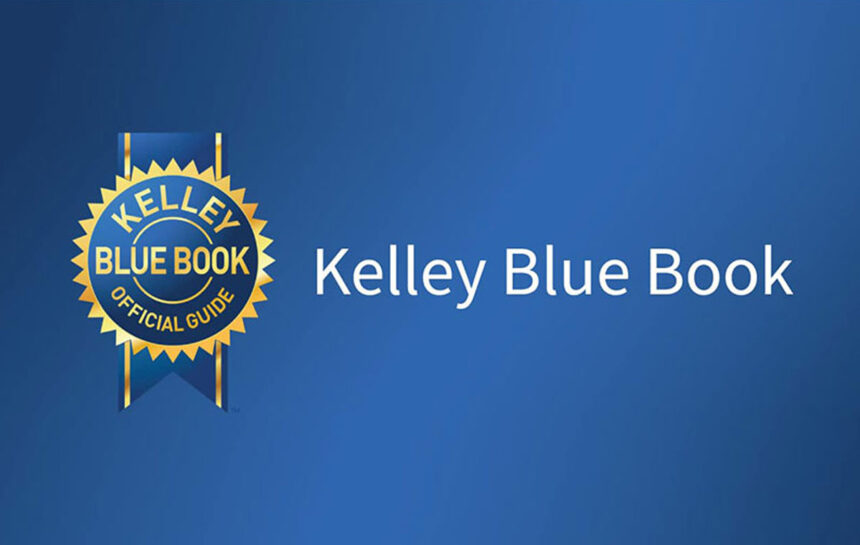The term "Semi Blue Book" isn't a formal, universally recognized industry standard or official publication like Kelley Blue Book for automobiles. Instead, it's an evolving, often informal, and sometimes humorous concept primarily used within certain online communities, particularly those revolving around online retail, reselling, and deal hunting. Think of it as a constantly updating, crowdsourced understanding of pricing trends, sales patterns, and perceived value for a specific category of goods, often those prone to fluctuation and limited availability. This article delves into the fascinating world of the "Semi Blue Book," exploring its meaning, purpose, how it operates, and its inherent limitations.
What is the "Semi Blue Book"? Defining the Elusive Concept
The Unofficial Guide to the "Semi Blue Book" Phenomenon
At its core, the "Semi Blue Book" represents a collective, community-driven effort to establish a perceived fair market value for a particular product or category of products. Unlike official pricing guides that rely on extensive data analysis and industry research, the "Semi Blue Book" is built on anecdotal evidence, shared experiences, historical sales data (often gleaned from online marketplaces), and a general understanding of supply and demand.
It's most often seen in niche communities dealing with collectibles (trading cards, vintage toys), limited-edition items (sneakers, clothing collaborations), or products subject to price gouging (essential goods during shortages). The "Semi Blue Book" isn't a single document; it's more of a shared understanding within a specific group. It's communicated through forum posts, Discord channels, Reddit threads, and even casual conversations.
Think of it as an organic, constantly evolving guide based on the wisdom (and biases) of the crowd. The term "Semi" acknowledges its inherent lack of scientific rigor and its reliance on subjective interpretations. It's a useful tool, but one that should be used with caution.
Why is the "Semi Blue Book" Important? Navigating the Wild West of Online Pricing
The importance of the "Semi Blue Book" stems from the need for consumers and resellers to navigate the often-turbulent waters of online pricing. Several factors contribute to this need:
- Price Volatility: Certain products, especially limited-edition items or those affected by supply chain disruptions, can experience dramatic price swings. The "Semi Blue Book" helps to identify these trends and understand what constitutes a reasonable price at a given time.
- Marketplace Manipulation: Online marketplaces are susceptible to price gouging and artificial inflation. The "Semi Blue Book" can serve as a sanity check, helping users identify and avoid being ripped off.
- Information Asymmetry: Sellers often have more information about product availability and market demand than buyers. The "Semi Blue Book" helps to level the playing field by providing buyers with a better understanding of the product's true value.
- Community Building: The process of creating and maintaining a "Semi Blue Book" fosters a sense of community among enthusiasts. It allows them to share information, learn from each other, and collectively combat unfair pricing practices.

How Does the "Semi Blue Book" Operate? A Look Under the Hood
The mechanics of a "Semi Blue Book" are decentralized and informal. They typically involve the following:

- Data Collection: Community members actively track sales data from various online marketplaces (eBay, StockX, Facebook Marketplace, etc.). This data includes the product's selling price, condition, and date of sale.
- Information Sharing: This data is then shared within the community through forums, Discord servers, or other communication channels.
- Analysis and Interpretation: Community members analyze the data, taking into account factors such as product rarity, condition, and current market demand.
- Consensus Building: Through discussion and debate, the community arrives at a consensus on what constitutes a fair market value for the product. This consensus is then communicated informally through comments, guides, or shared spreadsheets.
- Constant Updates: The "Semi Blue Book" is constantly updated as new sales data becomes available and market conditions change.

Benefits of Using a "Semi Blue Book": Informed Decisions and Community Power
The benefits of utilizing a "Semi Blue Book" are numerous:
- Informed Purchasing Decisions: Buyers can make more informed purchasing decisions, knowing whether they are paying a fair price for the product.
- Reduced Risk of Overpaying: The "Semi Blue Book" helps buyers avoid being ripped off by inflated prices.
- Improved Negotiation Power: Armed with knowledge of the product's fair market value, buyers can negotiate more effectively with sellers.
- Support for Fair Pricing Practices: By refusing to pay inflated prices, community members can collectively discourage price gouging and promote fair pricing practices.
- Community Empowerment: The "Semi Blue Book" empowers communities to take control of pricing in niche markets.
Important Considerations and Potential Challenges:
While the "Semi Blue Book" can be a valuable tool, it's important to be aware of its limitations:
- Subjectivity: The "Semi Blue Book" is based on subjective interpretations of data and community consensus. It is not a scientifically accurate pricing guide.
- Bias: The community's biases can influence the "Semi Blue Book." For example, if a particular group of collectors is particularly fond of a certain product, they may inflate its perceived value.
- Limited Scope: The "Semi Blue Book" typically covers a specific product or category of products. It is not a comprehensive pricing guide for all items.
- Volatility: The "Semi Blue Book" can be volatile, especially for products with fluctuating demand.
- Manipulation: Malicious actors could attempt to manipulate the "Semi Blue Book" by artificially inflating prices or spreading misinformation.
- Lack of Formal Structure: The informal nature of the "Semi Blue Book" can make it difficult to access and verify information.
Tips for Using the "Semi Blue Book" Effectively:
- Consult Multiple Sources: Don't rely on a single source of information. Consult multiple forums, Discord servers, and other online communities to get a broader perspective.
- Consider the Source: Be aware of the potential biases of the community providing the information.
- Analyze the Data: Don't just blindly accept the "Semi Blue Book" value. Analyze the underlying data and consider factors such as product condition and rarity.
- Trust Your Gut: If a price seems too good to be true, it probably is.
- Be Wary of Hype: Pay attention to the level of hype surrounding a product. Hype can artificially inflate prices.
Potential Solutions to Challenges:
- Developing More Structured Data Collection Methods: Implementing more rigorous data collection methods, such as using automated web scraping tools, can improve the accuracy of the "Semi Blue Book."
- Implementing Bias Detection Mechanisms: Developing algorithms to detect and mitigate bias in community data can help to ensure that the "Semi Blue Book" is more objective.
- Creating Centralized Information Repositories: Establishing centralized online repositories for "Semi Blue Book" data can make it easier for users to access and verify information.
- Promoting Transparency and Accountability: Encouraging transparency and accountability within the community can help to prevent manipulation and ensure that the "Semi Blue Book" is used ethically.
Categories Where "Semi Blue Book" Concepts Are Common:
- Trading Cards (Pokemon, Magic: The Gathering, Sports Cards): Prices are highly volatile and dependent on rarity, condition, and demand.
- Sneakers (Limited Editions, Collaborations): The resale market is huge, and prices can fluctuate wildly based on hype and availability.
- Vintage Toys: Condition and rarity are key factors in determining value.
- Luxury Goods (Handbags, Watches): Authentication and market trends play a significant role in pricing.
- Collectibles (Figurines, Art Prints): Scarcity and desirability drive value.
Semi Blue Book: Example of Price Table
| Product | Condition | Source (Community) | Date | Estimated Price Range | Notes |
|---|---|---|---|---|---|
| Pokemon Charizard Holo Base Set | NM | Reddit r/pkmntcg | 2024-10-27 | $200 - $300 | PSA 9 Graded: $500-$700 |
| Yeezy Boost 350 V2 Bred | DS | StockX Forum | 2024-10-27 | $350 - $450 | Price varies by size; check recent sales. |
| Vintage Star Wars Luke Skywalker (Double Telescoping Lightsaber) | VG | Rebelscum.com | 2024-10-27 | $1,500 - $2,000 | Missing accessories can significantly lower the price. |
| Louis Vuitton Neverfull MM (Damier Ebene) | Excellent | PurseBlog Forums | 2024-10-27 | $1,200 - $1,500 | Includes dust bag and receipt. |
| Funko Pop! Freddy Funko as Iron Man | Mint | Funko Reddit | 2024-10-27 | $800 - $1,000 | Box protector recommended. |
Conclusion: Navigating the Gray Areas of Value
The "Semi Blue Book" is a testament to the power of online communities and their ability to self-organize and share information. While it's not a perfect system, it provides a valuable tool for navigating the often-opaque world of online pricing. By understanding its strengths and limitations, and by using it in conjunction with other sources of information, consumers and resellers can make more informed decisions and protect themselves from unfair pricing practices. Ultimately, the "Semi Blue Book" is a reminder that value is often subjective and that community knowledge can be a powerful force in shaping market dynamics.
Frequently Asked Questions (FAQ)
- Is the "Semi Blue Book" an official publication? No, it's an informal, community-driven concept.
- Where can I find a "Semi Blue Book"? It exists within online communities related to specific products or categories. Look for forums, Discord servers, or Reddit threads.
- How accurate is the "Semi Blue Book"? It's based on subjective interpretations and community consensus, so its accuracy can vary.
- Can I rely on the "Semi Blue Book" to determine the value of an item? It's a helpful tool, but should be used in conjunction with other sources of information.
- Is the "Semi Blue Book" susceptible to manipulation? Yes, malicious actors could attempt to manipulate it.
- How often is the "Semi Blue Book" updated? It's constantly updated as new sales data becomes available and market conditions change.
- What are the benefits of using the "Semi Blue Book"? Informed purchasing decisions, reduced risk of overpaying, and improved negotiation power.
- What are the limitations of the "Semi Blue Book"? Subjectivity, bias, limited scope, and volatility.
- Is the "Semi Blue Book" applicable to all products? It's most common in niche communities dealing with collectibles, limited-edition items, or products subject to price gouging.
- How can I contribute to the "Semi Blue Book"? By sharing sales data and participating in community discussions.
0 comments